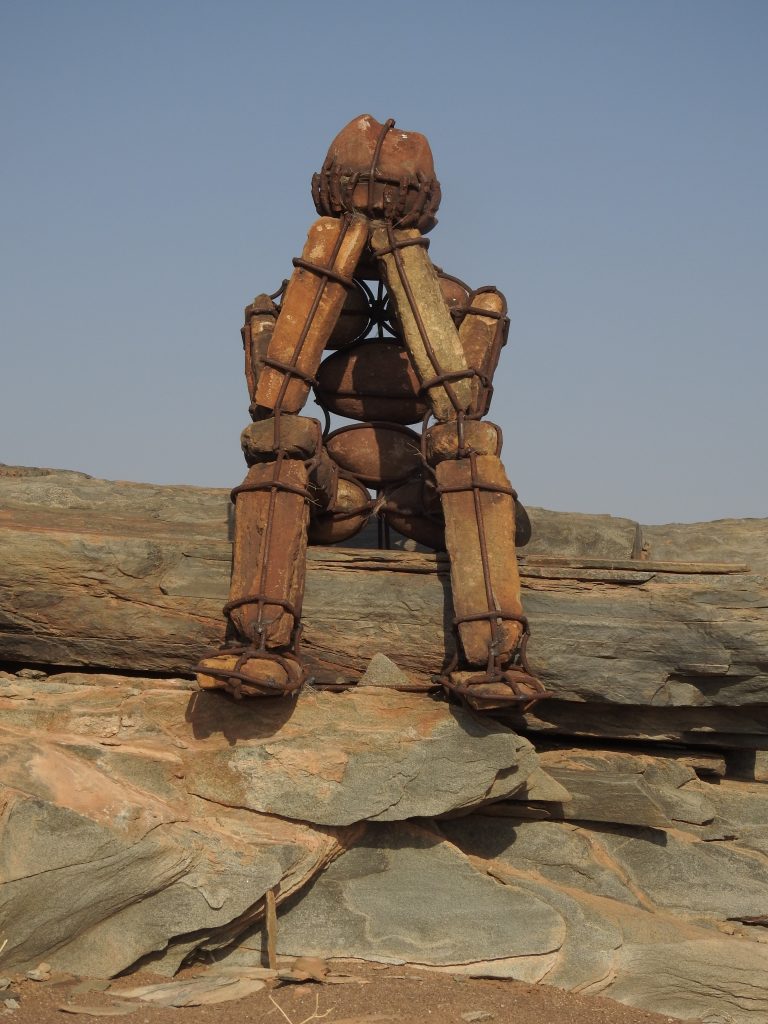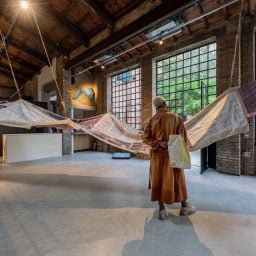The first-ever Namibian Pavilion at the upcoming 59th Venice Biennale has been thrown into chaos over allegations that it misrepresents the country’s art scene. The uproar has prompted the pavilion’s art patron, Monica Cembrola, to resign just one week before the opening of the event. Meanwhile, the main sponsor of the show, luxury travel company Abercrombie and Kent, has also yanked its support.
The sudden upheaval follows a petition published online in early March, signed by 372 individuals from the Namibian art community. It expressed outrage regarding the proposed Venice show, calling it a “poorly conceptualized and inappropriate debut that takes an antiquated and problematic view of Namibia and Namibian art.”
The pavilion, to be staged on the island of Certosa, is titled “The Lone Stone Men of the Desert” and features work by a Namibian artist who prefers to be known by the Banksy-like pseudonym RENN. Organizers have called it a “land art project,” which comprises a series of sculptures made of iron rods and desert stones in the likeness of the human form.
RENN is a 64-year-old white Namibian man born in Johannesburg, South Africa, who is making his artistic debut in Venice. He began his practice in 2013 in the desert of Namibia’s Kunene district.
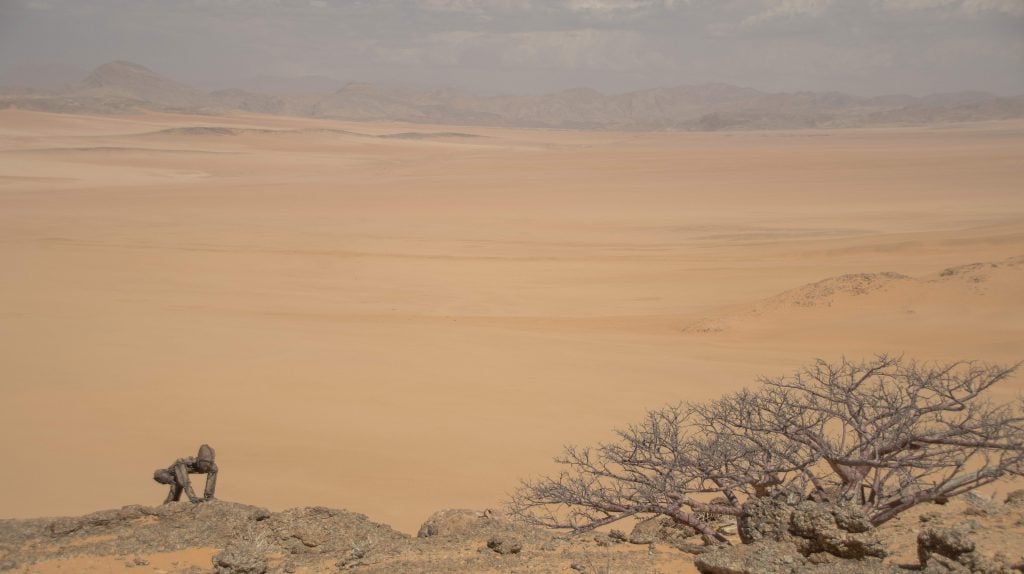
RENN, Out of the Sand for the Namibian Pavilion at the 59th Venice Biennale 2022. Photo ©RENN.
The Venice show also marks the first time that its Italian curator, Marco Furio Ferrario, is organizing an art exhibition. He generally refers to himself as a “strategic consultant,” and has worked since 2014 for companies in Namibia, notably on safari lodges.
“I saw RENN’s artworks in the Namibian desert and fell in love with them,” Ferrario told Artnet News by phone on April 12, adding that he had begun to think about how to show them internationally during the pandemic, and knew the biennial would put RENN’s work on the biggest global stage. Ferrario pitched the idea to the Namibian ministry of culture—which in 2014 had rejected a Namibian artist’s bid to mount a pavilion on the grounds that its scene was “not ready”—and the government agreed to lend its support.
Monica Cembrola, who runs a foundation dedicated to art from Africa, and who came on board as a patron of the pavilion in mid-July 2021, negotiated to stage the event on the island of Certosa. “After I came on board, the curator [Ferrario] did not want to share with me the identity of the artist,” she told Artnet News, as she explained her reasons for leaving the project. “I also wasn’t told that he [RENN] wasn’t an artist. The Namibian art scene deserves better. The petition showed me that the artist was not representing Namibia and I want to help emerging artists from Africa. I have decided to pull out for these reasons.”
Cembrola brought Abercrombie and Kent on board as the pavilion’s lead sponsor. In an official letter obtained by Artnet News, dated April 8, Abercrombie and Kent wrote to Ferrario stating it had given €97,600 to fund Namibia’s debut in Venice but due to the petition and Cembrola’s resignation, it was terminating the sponsorship deal as it would cause “harm” to the A&K brand. The company declined to give a comment to Artnet News.
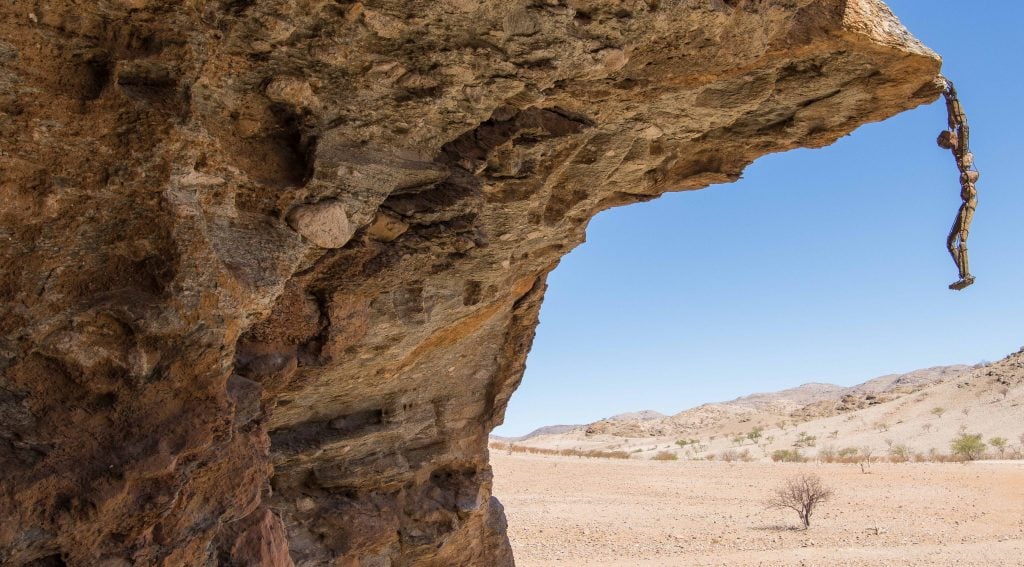
RENN, Solo for the Namibian Pavilion at the 59th Venice Biennale 2022. Photo ©RENN.
The petition criticizing Ferrario’s initiative alleges that RENN is known publicly as a member of the tourism industry and is “largely disconnected from the contemporary art and cultural scene in Namibia.” It also argues that “The Lone Stone Men of the Desert” project invokes racist and colonialist ideas about Indigenous peoples.
“We feel Namibia is not being represented at the pavilion,” a member of a concerned artist group who signed the petition told Artnet News on condition of anonymity. They added that Ferrario’s team had threatened several people who signed the petition with lawsuits. “The artist is completely unknown to the Namibian art scene and is not representative of Namibia or its artists. No one who organized the pavilion was from Namibia.”
The pavilion has also been criticized privately for selling RENN’s work as part of its “fundraising goals and packages.” Limited-edition prints are being sold for €15,000 ($16,200), and unique sculptures are going for €50,000 ($54,100).
In a March 11 email exchange obtained by Artnet News, a representative for Namibia’s ministry of culture wrote to the organizers of the Venice Biennale stating that they would pull their support from the pavilion, and asked organizers to officially “remove Namibia” from the exhibition and “allow the originators of the idea to continue with their own exhibition, however not as a Namibian Pavilion.” A few days later, on March 16, according to the same correspondence, the Ministry reversed this decision.
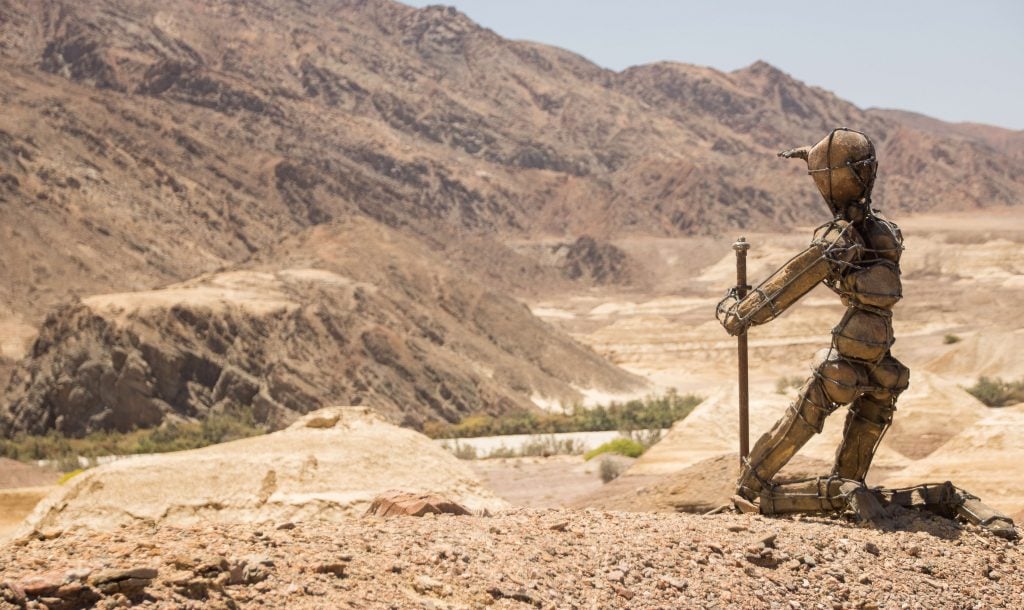
RENN, Far Gone for the Namibian Pavilion at the 59th Venice Biennale 2022. Photo ©RENN.
After members of the Namibian art community first voiced objections to the pavilion in late January (two months before the public petition), Cembrola reached out to key individuals from the art scene in the capital, Windhoek, to bring on board additional artists for the pavilion, notably “emerging and mid-career Namibian artists,” in an effort to project a more accurate vision of the country’s art scene. However, after additional names were submitted, Ferrario told Cembrola it was too late to add more artists.
“The point of this exhibition is that art comes before the artist,” Ferrario told Artnet News, defending the decision. “I did not choose an artist; I chose artworks.”
The scandal surrounding the Namibian Pavilion is particularly symbolic as it comes at a time when art from Africa is increasingly the focus of the international art world. However, the opportunities this opens up are also full of pitfalls—particularly given the imbalances in power and resources between those abroad and those rooted in countries such as Namibia.
Follow Artnet News on Facebook:
Want to stay ahead of the art world? Subscribe to our newsletter to get the breaking news, eye-opening interviews, and incisive critical takes that drive the conversation forward.
